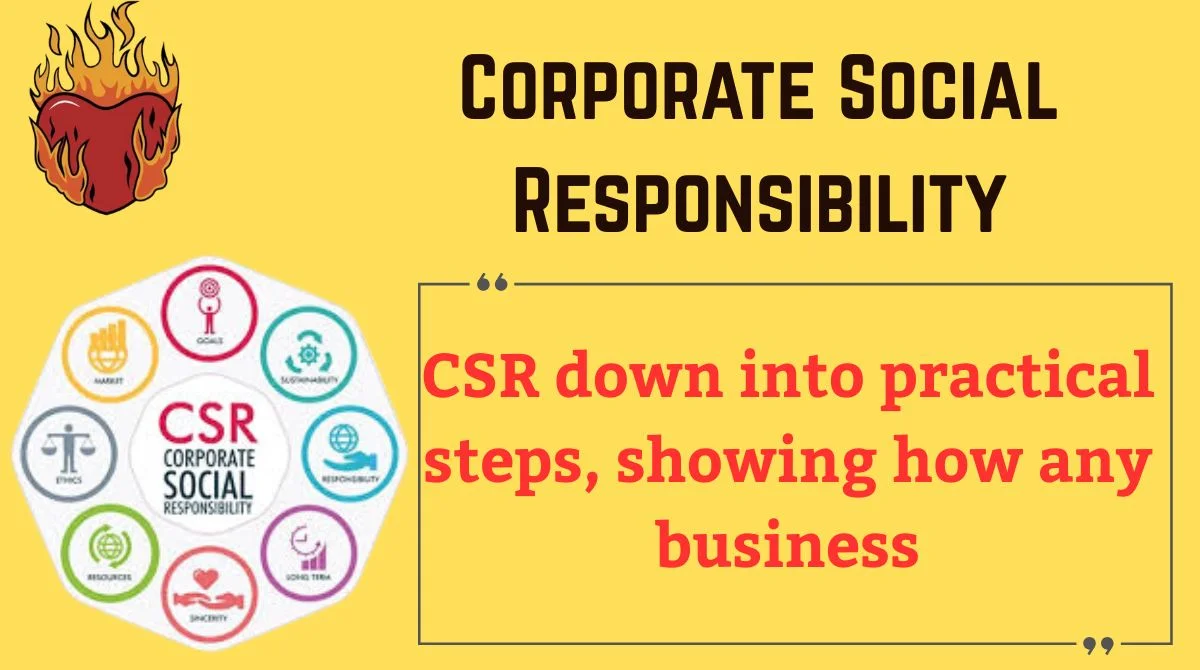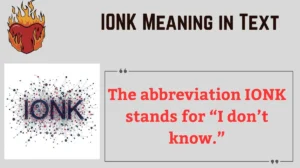Corporate Social Responsibility (CSR) has moved from a “nice-to-have” perk to a non-negotiable business expectation.
Stakeholders—customers, employees, investors, and regulators—are no longer satisfied with vague promises. They want proof that companies behave ethically, protect the planet, and uplift communities.
This guide breaks CSR down into practical steps, showing how any business—from startups to multinationals—can integrate social responsibility into its DNA.
Understanding Corporate Social Responsibility
Corporate Social Responsibility means a company takes responsibility for its impact on society and the environment. It goes beyond philanthropy. While charity donations matter, CSR also covers how a company makes its money, treats people, and manages its supply chain.
Key Principles
- Accountability: Owning up to a company’s effects on communities and the planet.
- Transparency: Disclosing policies, progress, and challenges openly.
- Stakeholder Engagement: Including employees, customers, and communities in decision-making.
CSR vs ESG vs Sustainability
| Concept | Scope | Focus |
|---|---|---|
| CSR | Voluntary corporate initiatives to benefit society | Social & environmental impact |
| ESG | Criteria used by investors to evaluate companies | Environmental, Social & Governance performance |
| Sustainability | Long-term business viability within planetary limits | Resources, climate, future generations |
A robust CSR program often feeds directly into ESG reporting and sustainability strategies.
Why CSR Is Important for Businesses
Done right, CSR strengthens a company’s foundation and fuels growth. Here’s why:
- Brand Perception: Nielsen research shows 73% of global consumers would switch to a brand that supports a good cause.
- Employee Engagement: Millennials and Gen Z consistently choose workplaces aligned with their values. According to Deloitte, companies with active CSR programs see 2.3 times higher employee retention.
- Investor Appeal: ESG-focused assets under management are projected to reach $40 trillion globally by 2030. CSR performance directly influences investor decisions.
- Risk Mitigation: Poor labor practices, environmental harm, or governance failures can trigger lawsuits, boycotts, and regulatory penalties.
Quote to Remember:
“The business of business is no longer just business. It’s also about the world we leave behind.” – Adapted from Larry Fink, BlackRock CEO
The Main Pillars of Corporate Responsibility
A well-rounded CSR program spans several pillars. Think of these as the “spokes” of a responsible business wheel.
Environmental Stewardship
- Reducing greenhouse gas emissions
- Switching to renewable energy
- Cutting waste and promoting recycling
- Investing in biodiversity projects
Ethical Labor Practices
- Ensuring fair wages and safe working conditions
- Building diverse and inclusive teams
- Monitoring suppliers for labor violations
Community and Social Impact
- Partnering with local schools and nonprofits
- Supporting small businesses in supply chains
- Encouraging employee volunteer programs
Governance and Accountability
- Transparent tax practices and anti-corruption policies
- Independent audits of CSR claims
- Whistleblower protections
Product Responsibility and Innovation
- Designing sustainable, safe products
- Using circular economy principles (reuse, remanufacture, recycle)
- Labeling products accurately to prevent greenwashing
Building a Socially Responsible Business Strategy
CSR isn’t a side project. It’s a strategic function integrated into operations.
Conduct a Materiality Assessment
Identify which issues matter most to your business and stakeholders. For example, a clothing company may prioritize labor rights, while a tech firm might focus on data privacy.
Align with Core Business Values
A sustainable strategy aligns with the company’s mission. Patagonia’s environmental activism makes sense because its products serve outdoor enthusiasts.
Set Measurable Goals and KPIs
- Reduce carbon footprint by 30% by 2030
- Achieve 50% female leadership by 2028
- Source 80% of raw materials sustainably by 2026
Involve Stakeholders
Hold town halls, surveys, and workshops to gather input from employees, suppliers, and communities.
Integrate CSR Into Operations
- Embed sustainability in procurement policies
- Tie executive bonuses to CSR performance
- Include CSR updates in annual reports
Mistakes to Avoid When Developing CSR Initiatives
Even well-meaning companies stumble. Here’s what to steer clear of:
- Unrelated Initiatives: A fast-fashion brand funding marine conservation but ignoring its own waste problem undermines credibility.
- Using CSR as a Marketing Scheme: Greenwashing damages trust and can lead to legal action.
- Waiting for Industry Trends: Proactive action often creates competitive advantage.
- Failing to Measure Impact: Without metrics, CSR feels like window dressing.
- Neglecting Change Management: Employees need training and incentives to adapt to new CSR policies.
Measuring and Reporting CSR Performance
What gets measured gets managed. Modern CSR demands transparency backed by data.
Key Metrics
- Environmental: CO₂ emissions per unit sold, water usage, waste diverted from landfill
- Social: Employee turnover, training hours, supplier audits
- Governance: Board diversity, anti-bribery training, tax transparency
Popular Reporting Frameworks
| Framework | Purpose | Best For |
|---|---|---|
| GRI Standards | Comprehensive sustainability reporting | Large, public companies |
| SASB Standards | Industry-specific disclosure | Investor-focused reporting |
| CDP | Climate, water, and forest disclosures | Environmental leadership |
| TCFD | Climate-related financial risks | Financial market transparency |
Third-Party Audits and Assessments
Use independent verifiers to confirm your data. This boosts credibility with investors and regulators.
Technology and Data
Many firms deploy CSR dashboards to track real-time progress. Cloud-based systems can integrate supplier data, employee engagement scores, and environmental metrics.
Certifications, Standards, and Recognitions
Certifications can validate a company’s CSR efforts. Some widely recognized options include:
- B-Corp Certification: Assesses social and environmental performance, accountability, and transparency. Over 7,000 companies worldwide are certified, including Ben & Jerry’s and Allbirds.
- ISEAL Code of Good Practice: Sets credibility principles for sustainability standards, ensuring consistency and trust.
- SASB Standards: Help businesses disclose financially material sustainability information.
- ISO 26000: Offers guidance on social responsibility, not a certifiable standard but a robust framework.
- UN Global Compact: Over 17,000 companies worldwide commit to ten universal principles covering human rights, labor, environment, and anti-corruption.
Examples of Successful CSR Initiatives
Case Study 1: Patagonia
Patagonia donates 1% of sales to environmental causes and encourages customers to repair, not replace, their gear. Its “Worn Wear” program keeps tons of textiles out of landfills each year.
Case Study 2: Unilever
Unilever’s Sustainable Living Plan aims to decouple growth from environmental impact. Between 2008 and 2022, the company cut CO₂ emissions from energy by more than 60% per ton of production.
Case Study 3: Starbucks
Starbucks sources 98% of its coffee ethically through its Coffee and Farmer Equity (C.A.F.E.) practices, benefiting farmers and reducing environmental impact.
Lessons Learned:
- Align CSR with core products.
- Measure outcomes, not just inputs.
- Communicate progress honestly.
The Future of CSR: Trends and Innovations
CSR is evolving quickly. Companies that stay ahead of trends will reap rewards.
- Integration with ESG and Sustainability Reporting: Expect convergence between voluntary CSR efforts and mandatory ESG disclosures.
- Stakeholder Capitalism: Shareholders aren’t the only focus. Employees, communities, and the planet share equal weight.
- Impact Investing: Funds specifically target companies with measurable positive impact.
- Technology in Monitoring: AI can flag supply-chain risks, track deforestation, or estimate carbon footprints more accurately.
- Regulatory Scrutiny: Governments worldwide are implementing stricter disclosure laws (like the EU Corporate Sustainability Reporting Directive).
FAQs About Corporate Social Responsibility
What exactly counts as CSR vs philanthropy?
CSR covers how a business operates—ethical sourcing, labor practices, environmental stewardship. Philanthropy is just one part (donations, grants).
Who benefits from CSR?
Companies gain brand trust, employees gain meaningful workplaces, and communities benefit from sustainable practices.
How can small businesses implement CSR cost-effectively?
Start with local initiatives: reduce energy use, support neighborhood programs, ensure fair supplier contracts.
How do you measure and report CSR impact?
Use frameworks like GRI or SASB. Track metrics over time, publish annual reports, and get third-party audits.
What’s the difference between CSR and ESG?
CSR is about what companies do to be responsible. ESG is how investors evaluate that responsibility using measurable criteria.
Conclusion
Corporate Social Responsibility isn’t a passing trend. It’s an essential part of doing business in the 21st century. By embedding CSR into strategy, companies create a win-win: stronger financial performance and a positive legacy for society and the planet.

Mark Peter is the creative mind behind RizzleLineLove.com, your go-to hub for witty, flirty, and downright hilarious pick-up lines. With a passion for blending humor and charm, Mark crafts content that sparks conversations, breaks the ice, and adds a playful twist to everyday moments.
Whether you’re looking to impress your crush, make your friends laugh, or spice up your social media captions, his work is all about helping you connect — one clever line at a time.



